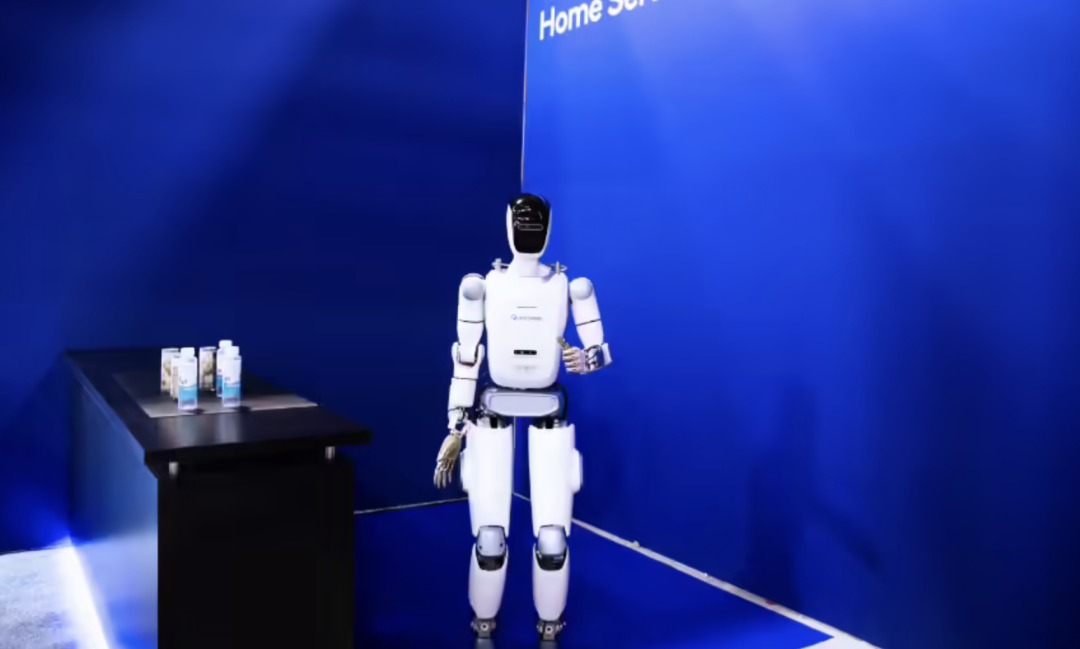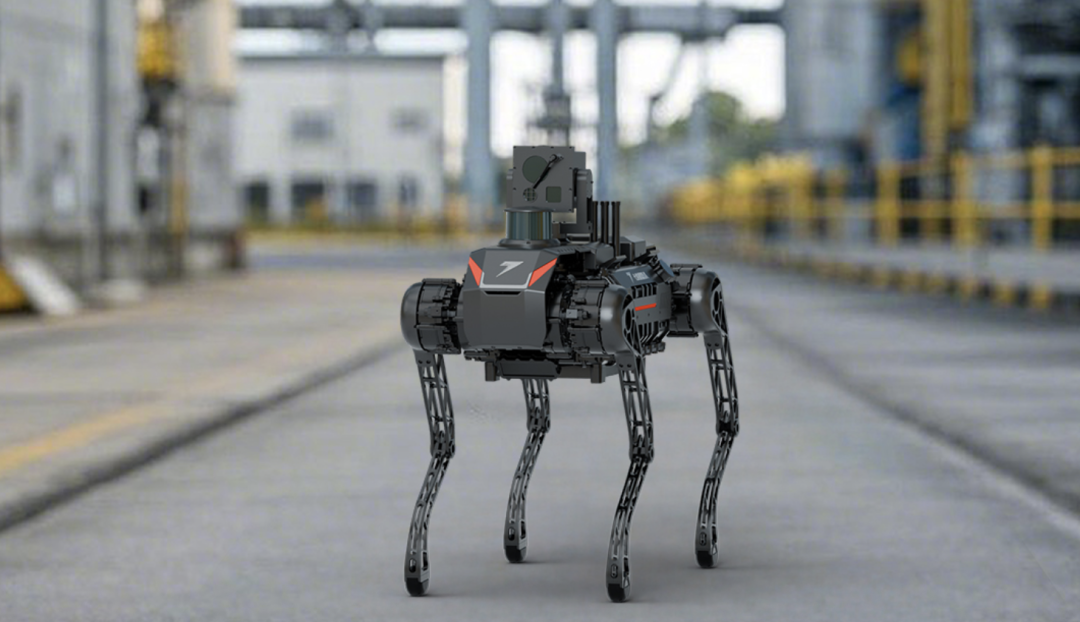Humanoid Robot Industry Circle in Western China: Analyzing Chengdu, Chongqing, and Xi'an's Strengths
![]() 05/09 2025
05/09 2025
![]() 471
471

In the western region of China, three cities—Chengdu, Chongqing, and Xi'an—are leading a technological revolution in production relations, each showcasing a distinct regional flavor. The Embodied Learning Society has provided an in-depth look into the industrial landscapes of these cities, and this article delves into them through three pivotal dimensions: "Industrial Background, Key Players, and Core Advantages."
Editor: Di Xintong
When envisioning China's embodied intelligence industry, the combined strength of Chengdu, Chongqing, and Xi'an stands out as an indispensable "western inkstroke" in the grand picture.
Whether it's Chengdu, the "dual-chain core" of China's western aerospace sector, Xi'an, the "cradle of China's aerospace power," or Chongqing, the innovator behind the "Chinese Compound Eye," their historical achievements silently narrate a solid scientific and technological foundation, adding a sense of inevitability to their investments in embodied intelligence industries.
In addition to leveraging scientific research and industrial resource advantages, successive policy incentives have pressed the "accelerator button" for these western cities, resulting in several "western-made" humanoid robots and embodied intelligence products.
At the Qualcomm booth at CES 2025, "Chengdu Person" Tongtianxiaoneng seamlessly interacted with visitors, accurately retrieved beverages, and handed them over steadily.
The Chongqing-made robot dog "Xiaotian" made an appearance at the 2025 Two Sessions. The company behind it is one of the few domestic enterprises capable of mass-producing explosion-proof robots, with orders exceeding 3,000 units as of April this year.
The first humanoid robot "Xunxiao" from the Embodied Intelligence Robotics Research Institute of Youai Zhihe and Xi'an Jiaotong University debuted on CCTV's May 4th Evening Party, transforming into a "daddy taking care of kids," turning the ideal household robot nanny into a reality.
These three western cities are driving a paradigm shift in production relations fueled by technological change, each exhibiting a unique regional style. The Embodied Learning Society has detailed the industrial circles of Chengdu, Chongqing, and Xi'an, and this article dissects them through three dimensions: "Industrial Background, Key Players, and Core Advantages."
As the "western inkstroke" continues to spread across the embodied intelligence landscape, a deeper, more intricate new vista of China's intelligent technology is emerging.

Chengdu: Forging a Closed Loop of "Research-Manufacturing-Application"
As one of the core cities in the west, Chengdu's mature industrial advantages have been pivotal in its layout of embodied intelligence as a "first move."
Data shows that in 2024, Chengdu achieved a "double-thousand breakthrough" in the scale and number of enterprises in the core artificial intelligence and robotics industry. The core industry scale exceeded 100 billion yuan, a year-on-year increase of about 39%, with the number of related enterprises surpassing 1,000.
Relying on its industrial resources, Chengdu quickly established a closed loop of "research and development + manufacturing + application" for humanoid robot complete machines. For instance, the "Gongga No. 1" launched by the Chengdu Humanoid Robot Innovation Center boasts full independent intellectual property rights, with 60% of its complete machine parts sourced from local industrial chain enterprises in Chengdu. Through industrial synergy, Chengdu has the confidence to transcend "physical space," enabling rapid research and development iterations and continuous evolution in practical applications.
In terms of key players, Chengdu Humanoid Robot Innovation Center Co., Ltd., Embodied Technology, Ares Power, Ajiaxi Intelligence, and others have emerged. Moreover, to address the core pain point of embodied intelligence—the "dataset"—Chengdu has established the Tianfu Jiangxi Laboratory Robotics Training Technology Innovation Center, focusing on the four core tasks of embodied scenario centers, embodied data centers, brain centers, and hardware complete machine centers, striving to overcome the constraints of insufficient embodied intelligence scenario data.
Taking the Chengdu Humanoid Robot Innovation Center as an example, it released the ultra-lightweight humanoid robot "Gongga No. 1" in October 2024, weighing just 25 kg with a maximum load of 5.5 kg, a load-to-weight ratio of 0.22, and an endurance time of 8 hours. The ultra-lightweight design offers high safety, environmental adaptability, cost controllability, and the ability to replace human work for an extended period. From a product design perspective, it meets the prerequisites for the true marketization and industrialization of humanoid robots.
Beyond maintaining its differentiated ultra-lightweight characteristics, the Chengdu Humanoid Robot Innovation Center has also bet on the "brain" aspect of humanoid robots, releasing the Raydiculous-1 system. Based on the three-dimensional scene graph (3DSGs) technical architecture, this system can perform cross-space long-period task autonomous execution capabilities without manual intervention or remote control.
Specifically, leveraging the construction of spatial logic in dynamic environments, robots can perceive environmental changes in real-time and adjust path planning based on an autonomous learning mechanism. In actual tests, the robot smoothly completed complex tasks such as "fetching objects from the living room - crossing the hallway - kitchen operation - bedroom tidying." On the application side, the Chengdu Humanoid Robot Innovation Center stated that it will be applied in fields such as household services and elderly care.
Ajiaxi Intelligence's "Tongtianxiaoneng" has now ventured beyond Chengdu to meet international audiences. Ajiaxi deeply integrates the advantages of the architecture operating system and AI tool usability, enabling humanoid robots to possess human-computer interaction and fine motor control capabilities, enabling natural intelligent dialogue, conquering complex terrains, and coordinating full-body operations. Ajiaxi CEO Sun Xiaogang once said, "We plan to promote the application of 'Tongtianxiaoneng' in multiple fields such as industrial manufacturing, commercial services, and family companionship."

Image Source: Internet
Considering Chengdu's own participation, the city views the robotics industry as a new racetrack for future industries and includes it among its 30 key industrial chains. According to the "Three-Year Action Plan for the Development of the Robotics Industry in Chengdu (2024-2026)," it strives to launch 100 new robot products, gather 100 upstream and downstream enterprises in the industrial chain, and create 100 benchmark demonstration scenarios by 2026.
Not long ago, the Xinchuan Heart Robot Park in the Xinchuan Innovation Science and Technology Park of Chengdu High-tech Zone opened. The park will build six centers for robot industry clustering, testing and training, application scenarios, talent training, international exchanges, and trusted computing, creating an integrated "industry-university-research-application" robot community and establishing a full-cycle support system of "laboratory-pilot-market."
It's evident that Chengdu is putting all its industrial efforts into the in-depth development of embodied intelligence. Perhaps soon, we will witness more humanoid robots "researched and manufactured in Chengdu" entering production and living scenarios in batches.

Chongqing: Paving the Way for the Automobile Hub, Dual Empowerment
As an "old-brand" automobile hub, Chongqing's urban heritage has long harbored the "kinetic energy" of robots. As early as around 2009, Chongqing emerged as a city at the forefront of national robot demand. In 2024, the output of robots in Chongqing exceeded 60,000 units, with the output value of the entire industrial chain surpassing 37 billion yuan; many domestic robots appeared on various workstations in the Changan Automobile Digital Intelligence Factory.
As an automobile hub, Chongqing's layout of embodied intelligence primarily endows it with two significant advantages. On the one hand, the automobile industry chain is highly similar to the embodied intelligence and humanoid robot industry chains. Thanks to its unique industrial cluster advantages, Chongqing has a first-mover advantage in the industry chain. On the other hand, another key aspect of this industry chain is the abundance of factories, which can provide real operating spaces. Pu Can, associate professor at the National Excellent Engineers College of Chongqing University, introduced that Chongqing has a comprehensive range of industrial categories and obvious advantages in developing the embodied intelligent robot industry, with more applicable scenarios that can be implemented.
In terms of key players, Chongqing has not only assembled innovative enterprises such as Qiteng Robotics and Aubo Robotics but also established enterprises like Changan Automobile making strategic layouts. The encounter of enterprises of different sizes has sparked multiple innovations.
Qiteng Robotics mainly focuses on the field of emergency safety. Its explosion-proof quadruped robot—X3 Stable—can be widely used in high-risk industries such as petroleum, chemicals, natural gas, and steel, covering diverse and complex application scenarios like deserts, forests, mountains, and gobies. It performs unmanned reconnaissance, inspection, and other mission execution.

Image Source: Qiteng Robotics
X3 Stable possesses capabilities such as adaptive learning, high-precision image acquisition, analysis, and perception, enabling it to maintain high adaptability in unknown and unstructured environments. It moves smoothly on complex road surfaces such as stairs, steps, gaps, obstacles, and narrow spaces.
From Changan Automobile's perspective, leveraging its Tianshu large model + Tianyu interactive cockpit technology base, it provides a multi-scenario robot product matrix for future digital intelligence factory scenarios, integrates industry resources, and establishes a design-algorithm-model-data acquisition-acceptance research and development system. It is expected that the production of Changan humanoid robots will commence in 2028.
Currently, Changan Automobile has begun to accelerate "recruiting," and multiple "robot engineer" positions were recruited in March this year, involving simulation and testing, complete machine and component design, and small and large brain control positions. Additionally, Changan Automobile disclosed the "Public Sourcing Announcement for Suppliers of Humanoid Robot R&D Projects," stating that it will develop a humanoid robot, break through core technologies such as drive, dynamic control, and multimodal perception, promote the development of robots towards high performance, low cost, and high reliability through technological innovation and industrial synergy, and build a complete technical ecosystem.
Changan Automobile Chairman Zhu Huarong once said, "In the next five years, intelligence is one of the opportunities for the automotive industry. Intelligent technology is accelerating iteration, software-defined cars are transforming into AI-defined cars, and the integrated land, sea, and air travel ecosystem has become a general trend. Humanoid robots and flying cars will become new industrial growth points."
From a broader perspective, Chongqing has announced the first batch of 12 "unveiling and leading" projects in the direction of embodied intelligent robots, covering three categories of open-source communities, open scenarios, and technological breakthroughs. Enterprises such as Thalys and Changan Automobile have been selected. By breaking through key tasks, it can promote collaborative innovation upstream and downstream of Chongqing's overall industrial chain and accelerate the transformation of technological achievements.
This city, which once "measured the world with wheels," is now using embodied intelligence as a new engine to drive China's intelligent manufacturing into more complex physical spaces.

Xi'an: Injecting Science and Education Power, Blooming in Both Agriculture and Industry
On this "land of the three Qin dynasties," cyberpunk and traditional culture have collided, sparking the "intelligent manufacturing" flame.
As an important science and education center in western China, Xi'an boasts universities such as Xi'an Jiaotong University, Northwestern Polytechnical University, and Chang'an University. These universities have made fruitful scientific research achievements in the field of robotics. For instance, Xi'an Jiaotong University and Youai Zhihe jointly established the Embodied Intelligence Robotics Research Institute and announced plans for seven humanoid robots. The collaboration between production and research has accelerated the pace of humanoid robots moving from the laboratory to the production line.
From the perspective of key players, Xi'an has assembled the Embodied Intelligence Robotics Research Institute of Youai Zhihe and Xi'an Jiaotong University, Weijing Robotics, and others.
Weijing's humanoid robots are primarily targeted at the agricultural field, with customers distributed across agriculture, household, and industry. Weijing Intelligence CEO Dong Xiaojian said, "We are very optimistic about the potential of the agricultural picking market. At the same time, with the aggravation of population aging, the household service robot market will also usher in immense opportunities. The industrial assembly field has an increasing demand for automation and intelligence, which is also the direction we focus on expanding." Currently, its humanoid robot "Xiaowei" has been used in agricultural picking scenarios such as apple orchards and tomatoes; the total shipment volume of Weijing Intelligence humanoid robots has exceeded 1,500 units.
Technologically, Weijing Intelligence incorporates the "Nature Learning framework" to empower robots with the capacity for autonomous learning and evolution in natural settings. Specifically, leveraging the binocular stereo vision system (ViEye) and Natural Learning® technology, these robots swiftly comprehend environmental semantics through interactive data from real-world scenarios, without the need for extensive labeled data. They establish object spatial relationship models and autonomously refine behavior strategies.
The Embodied Intelligence Robotics Research Institute of Youai Zhihe, in collaboration with Xi'an Jiaotong University, prioritizes enhancing the robot's "brain" functionality. Firstly, it imparts greater intelligence and subsequently facilitates seamless "communication" within the group. The MAIC system, developed by the institute, is grounded on a hybrid architecture that integrates a multimodal universal base large model with a "one brain, multiple states" end-side embodied model. This innovative approach seamlessly merges a universal intelligent control system with a modular hardware form.

Image Source: Embodied Intelligence Robotics Research Institute of Youai Zhihe and Xi'an Jiaotong University
Furthermore, the research institute addresses diverse scenarios such as industrial intelligent manufacturing, smart inspection, and life services. It integrates industry-specific knowledge maps and constructs an Agent aggregation application platform, thereby fostering a comprehensive embodied intelligence ecosystem that encompasses professional data, reasoning, decision-making, real-time control, scenario closed-loop, and continuous learning.
The MAIC system endows robots with a profounder understanding of the world and the ability to grasp the complexities of various tasks. Simultaneously, it harnesses expert knowledge from vertical industries to tailor knowledge to work requirements more precisely and achieve continuous iteration in real-world applications.
Crucially, the MAIC system not only boosts the "IQ" of individual agents but also elevates the "EQ" among robot groups. It ensures a unified understanding of task requirements in multi-robot collaborations, driving heterogeneous robot groups (e.g., bipeds, wheeled, and quadrupeds) with a singular "brain," thereby reducing practical application costs.
Notably, the founding team of Youai Zhihe originates from Xi'an Jiaotong University. This time, they reunite with their alma mater to contribute to the embodied intelligence wave, leveraging their scene-specific advantages.
In the heart of the millennium-old capital, Xi'an employs "cyber intelligence manufacturing" as its brush to paint a new chapter in the humanoid robot industry. As a significant science and education hub in the west, Xi'an capitalizes on the research potential of prestigious universities like Xi'an Jiaotong University and Northwestern Polytechnical University to forge a comprehensive innovation ecosystem spanning "basic research, technology transfer, and scenario landing." This makes Xi'an an indispensable western engine in the embodied intelligence landscape.
With the steady release of policy benefits and continuous technological advancements, China's embodied intelligence industry, exemplified by the "western sample," will robustly propel the transition of humanoid robots from laboratories to households.
The innovative spirit of the three western cities will undoubtedly continue to surge forward.





